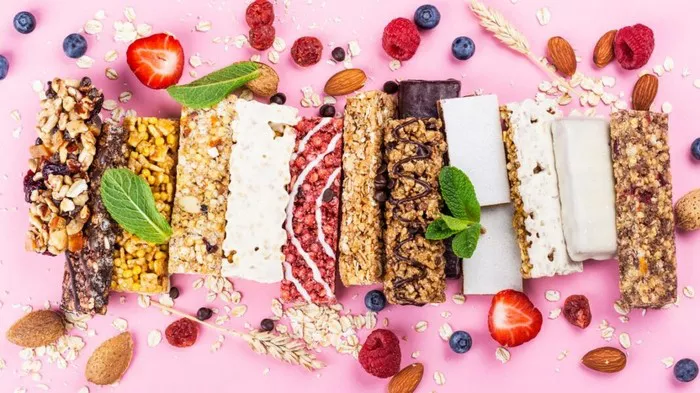Cereal has been a breakfast staple for many adults, offering a quick and convenient way to start the day. However, with a wide array of options available on supermarket shelves, choosing the healthiest cereal can be a daunting task. This article aims to shed light on the factors that make a cereal healthy for adults and highlight some of the top choices available in the market.
Understanding Cereal Nutrition
Before delving into the healthiest cereal choices, it’s essential to understand the key elements of cereal nutrition. The most common components found in cereals are:
Whole Grains: Look for cereals that list whole grains as the first ingredient. Whole grains are rich in fiber, vitamins, and minerals, promoting heart health and aiding digestion.
Fiber: Fiber is crucial for digestive health, weight management, and blood sugar regulation. Opt for cereals with at least 3 grams of fiber per serving.
Sugar: Keep an eye out for added sugars, as they can contribute to excessive calorie intake and may lead to health issues. Aim for cereals with low sugar content.
Protein: Protein helps maintain muscle mass and keeps you feeling full for longer. Choose cereals that have a decent protein content, ideally over 5 grams per serving.
Fat: Look for cereals with minimal saturated and trans fats, which are detrimental to heart health. Healthy fats like those from nuts and seeds are beneficial in moderation.
Top Healthiest Cereal Choices
Now that we know what to look for, let’s explore some of the healthiest cereal options available for adults:
Oatmeal: A classic and nutritious choice, oatmeal is packed with soluble fiber, which helps lower cholesterol levels and stabilize blood sugar. Choose plain, steel-cut, or rolled oats and avoid flavored options laden with sugar.
Granola: A well-made granola can be a nutrient-dense choice with whole grains, nuts, and seeds. However, be cautious of store-bought varieties high in added sugars. Consider making your granola at home to control the ingredients.
Muesli: Similar to granola, muesli consists of raw rolled oats, fruits, nuts, and seeds. It often contains less added sugar than granola and is a great source of fiber and healthy fats.
Bran Cereal: Bran cereals, such as wheat bran or oat bran, are rich in dietary fiber, promoting regular bowel movements and digestive health. They are particularly beneficial for those struggling with constipation.
High-Fiber Flakes: Certain bran flakes and whole-grain flakes cereals offer a good amount of fiber and nutrients. Be cautious of those with added sugars and opt for unsweetened versions.
Multigrain Cereals: Look for cereals that contain a blend of whole grains like wheat, oats, barley, or quinoa. These provide a variety of nutrients and flavors.
Low-Sugar Whole Grain Cereals: Some brands specifically offer cereals with reduced sugar content while still providing the goodness of whole grains. Check the labels to find options with minimal added sugars.
Cornflakes: If you enjoy a simple and crunchy cereal, choose cornflakes with no or low sugar content. Pair them with fresh fruits and nuts to enhance the nutritional value.
Choosing the Right Milk
Cereal and milk are a classic combination, but the type of milk you choose can impact the overall healthiness of your breakfast:
Skim Milk: For those aiming to reduce calorie and fat intake, skim milk (fat-free milk) is an option. However, be mindful that it has less flavor and might not keep you as satiated as whole milk.
2% Milk: This variety strikes a balance between skim milk and whole milk, offering some of the creaminess of whole milk with a lower fat content.
Almond Milk: Almond milk is a popular dairy-free alternative, providing fewer calories and fat compared to whole milk. Choose unsweetened almond milk to avoid added sugars.
Soy Milk: Soy milk is another dairy-free option that is rich in protein and calcium. Opt for fortified soy milk to ensure you’re getting essential nutrients.
Oat Milk: Oat milk has gained popularity for its creamy texture and slightly sweet taste. It contains beta-glucans, which have been associated with heart health benefits.
Additional Cereal Toppings
Enhance the nutritional value and taste of your cereal by adding these healthy toppings:
Fresh Fruits: Adding sliced bananas, berries, or diced apples can increase the fiber, vitamins, and antioxidants in your breakfast.
Nuts and Seeds: Walnuts, almonds, chia seeds, or flaxseeds are excellent sources of healthy fats, protein, and essential nutrients.
Greek Yogurt: Boost the protein content of your breakfast by adding a dollop of plain Greek yogurt, which also provides probiotics for gut health.
Cinnamon: Sprinkling some cinnamon not only adds flavor but also provides antioxidants and may help regulate blood sugar levels.
Be Wary of Cereal Marketing Tricks
Cereal manufacturers often use marketing strategies to make their products seem healthier than they actually are. Here are some common tricks to watch out for:
Misleading Portion Sizes: Pay attention to serving sizes, as the listed values may not reflect what people typically consume. Calculate the nutritional content for your desired portion size.
Health Claims: Phrases like “whole grain,” “natural,” or “low-fat” can create the illusion of a healthy cereal. Always read the nutrition label to verify these claims.
Front-of-Pack Symbols: Some cereals display various health symbols on their packaging. While some of these symbols are valid certifications, others may be designed to mislead consumers.
Colorful Packaging: Bright and attractive packaging can draw you in, but don’t let it cloud your judgment. Focus on the ingredient list and nutrition facts.
Conclusion
Selecting the healthiest cereal for adults involves considering your individual nutritional needs and preferences. Remember to prioritize whole grains, fiber, and protein while avoiding excessive sugar and unhealthy fats. Experiment with different cereal types and toppings to find what works best for you. Ultimately, a well-balanced breakfast that provides sustained energy and essential nutrients will set you up for a successful day ahead. Happy cereal hunting!


























